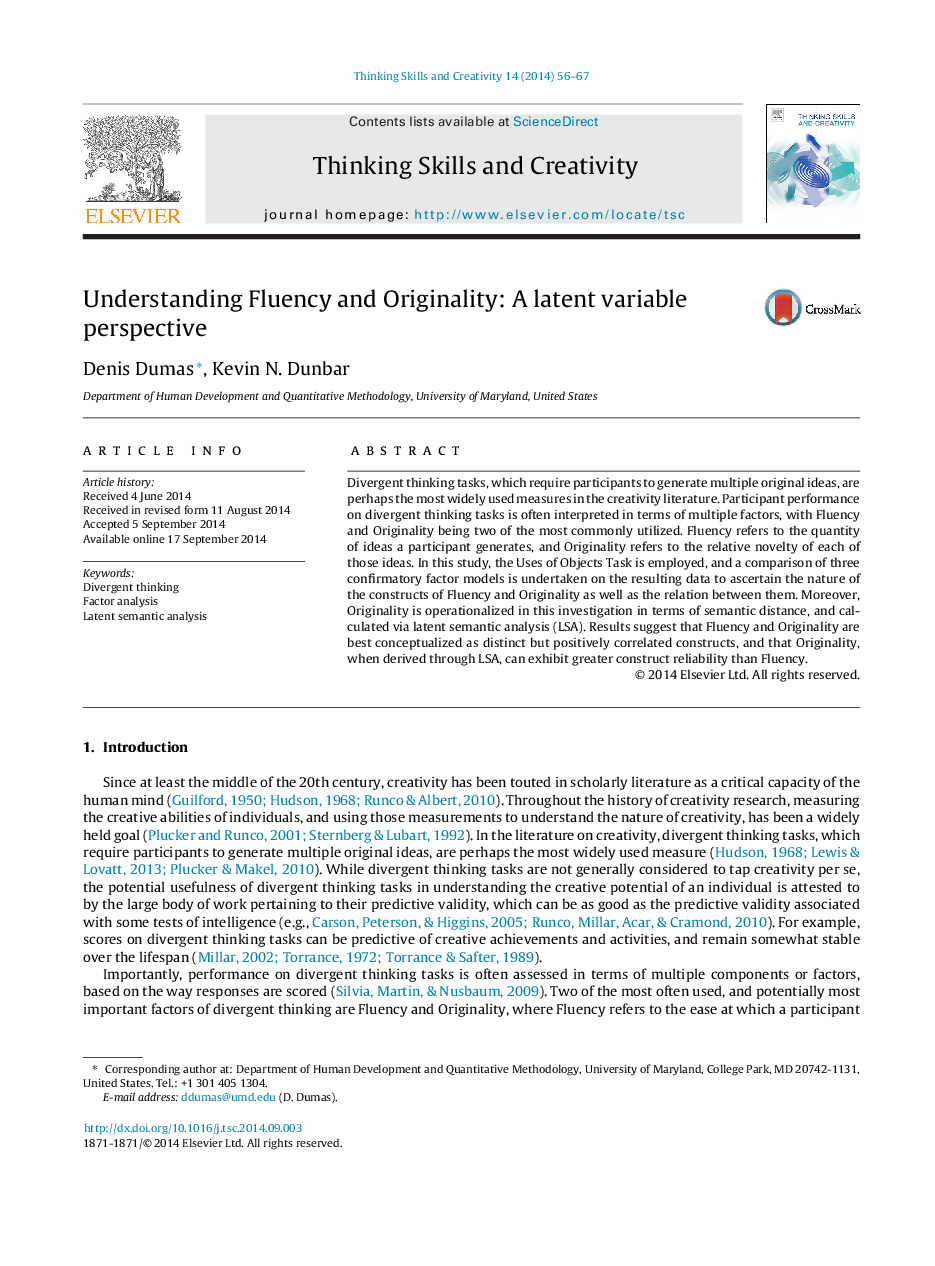| کد مقاله | کد نشریه | سال انتشار | مقاله انگلیسی | نسخه تمام متن |
|---|---|---|---|---|
| 375549 | 622803 | 2014 | 12 صفحه PDF | دانلود رایگان |
• We assessed participants’ Fluency and Originality using the Uses of Objects Task.
• Originality was operationalized in terms of semantic distance, and calculated using latent semantic analysis (LSA).
• Three theoretically defensible confirmatory factor models were compared.
• Fluency and Originality are best conceptualized as distinct but positively correlated constructs.
• When derived via LSA, the latent construct of Originality was more reliable than Fluency.
Divergent thinking tasks, which require participants to generate multiple original ideas, are perhaps the most widely used measures in the creativity literature. Participant performance on divergent thinking tasks is often interpreted in terms of multiple factors, with Fluency and Originality being two of the most commonly utilized. Fluency refers to the quantity of ideas a participant generates, and Originality refers to the relative novelty of each of those ideas. In this study, the Uses of Objects Task is employed, and a comparison of three confirmatory factor models is undertaken on the resulting data to ascertain the nature of the constructs of Fluency and Originality as well as the relation between them. Moreover, Originality is operationalized in this investigation in terms of semantic distance, and calculated via latent semantic analysis (LSA). Results suggest that Fluency and Originality are best conceptualized as distinct but positively correlated constructs, and that Originality, when derived through LSA, can exhibit greater construct reliability than Fluency.
Journal: Thinking Skills and Creativity - Volume 14, December 2014, Pages 56–67
